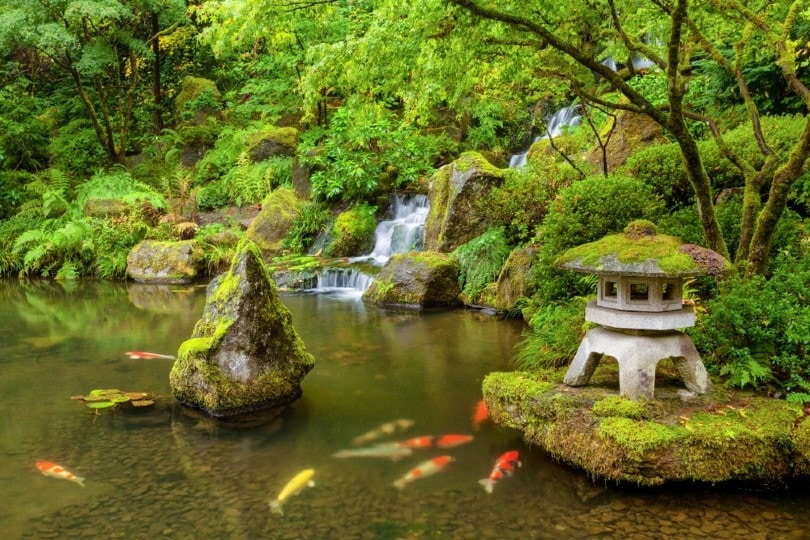If you have a fish pond, you’ve probably dealt with moss. Luckily, small amounts of moss in your pond are just fine for your fish. It can provide food for your fish and will help oxygenate the water. It’s when the moss begins to take over that you might end up with a problem.
This quick guide will give you a few helpful tips on how to get rid of excessive moss in your pond and how to prevent it from growing in the first place. Keep reading, and get ready to enjoy a nice, clean pond.

Why Does Moss Grow in Your Pond?
To better understand how to get rid of moss, you need to know why it grows in the first place. Pond moss is also known as pond scum. It’s a form of algae that grows when there are excess nutrients in the water. Fueled by sunlight, moss can quickly spread across the top of your pond. If it gets too out of hand, it will begin taking nutrients that your fish and aquatic plants need.
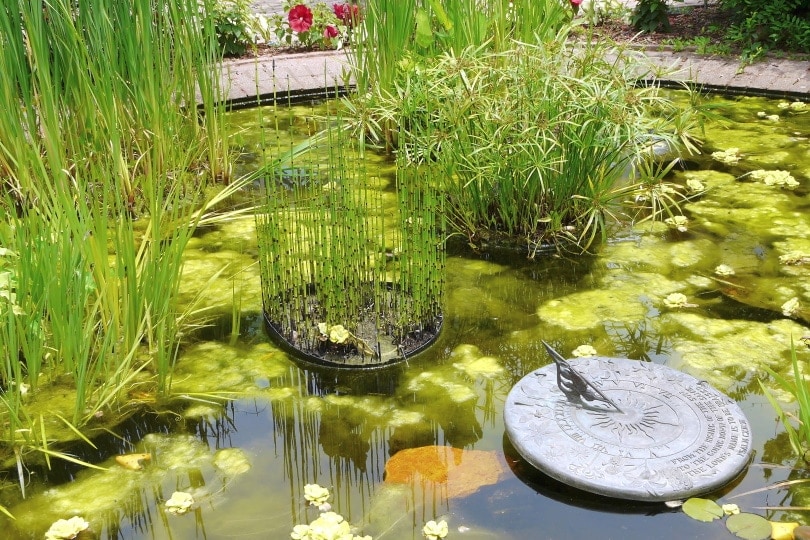
The 8 Tips to Get Rid of Moss Safely
There are chemical treatments out there, but many of these pose risks to the fish and other lifeforms in your pond. Luckily, there are many ways to get rid of excess moss without harming the fish or other aquatic plants in your pond.
1. Use a Scoop
One of the simplest ways to remove moss from the top of the pond is to scoop it out. You can use a pond rake or other pool skimmer to gently remove the moss from the surface of the water. This won’t help with the bits at the bottom, but it’s a good start.
2. Vacuum
Pond vacuums are expensive, but if you also have a pool or have a large pond, they are a worthy investment. They can suck up algae from the tiny cracks and crevices in the rocks at the bottom of your pond with ease. They also help remove large quantities of moss quickly.
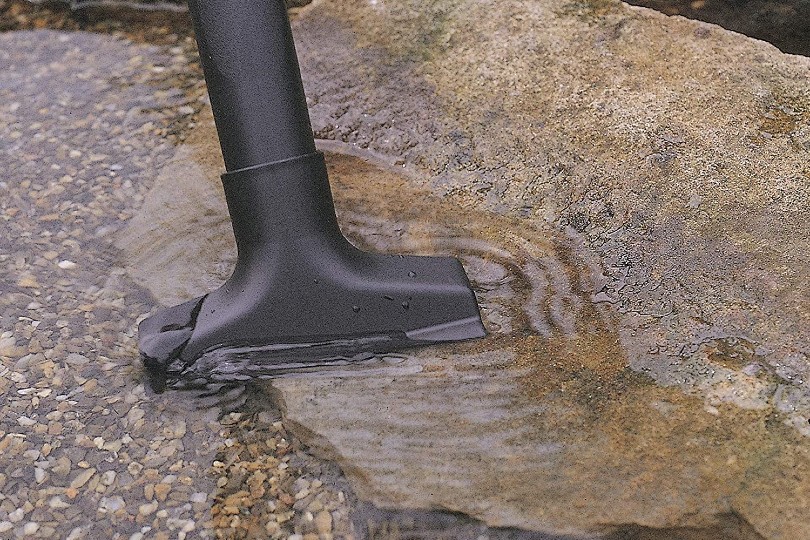
3. Barley Straw
Adding barley straw is a simple way to prevent the spread of algae in your pond. As it decays, barley straw releases chemicals. These are fatal to algae but won’t harm your other pond creatures and plant life.
4. Algae Eaters
You can add algae-eating creatures to your pond to help prevent the growth of excess algae. Goldfish and Koi are effective algae eaters, as are certain tadpoles and plecos.
5. Nutrient-Absorbing Plants
Nutrient-absorbing plants like watercress, lily pads, and cattails will soak up the excess nutrients that can cause moss to grow out of control. They can also beautify your pond.
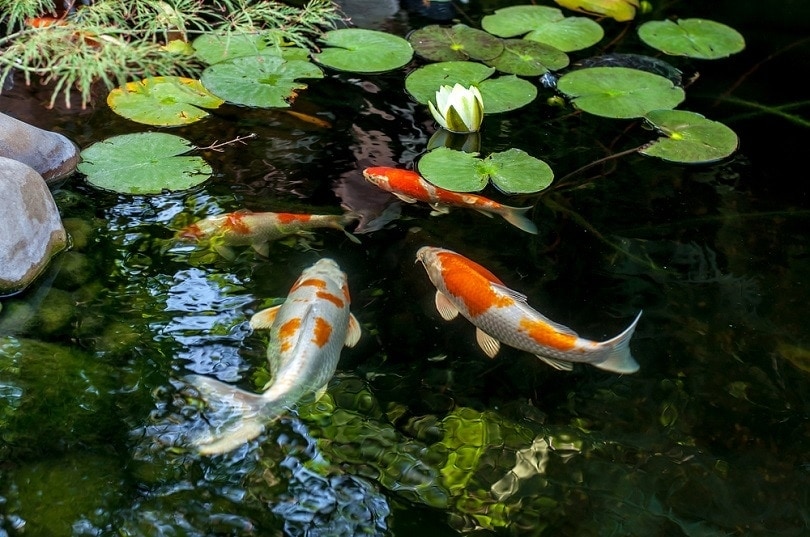
6. Add Beneficial Bacteria
There are many great pond sludge removers out there that only use beneficial bacteria. Some require regular applications to be effective. However, they will get rid of moss and keep it away if used properly.
7. Zeolite Stone
Zeolite stones can also reduce algae in your pond. These stones absorb nitrates from the water, thus giving the algae fewer nutrients to feed on and reducing blooms.
8. Use a Filter
A pond filter will keep the water in your pond moving and help prevent algae buildup. It will also help aerate the water and keep it oxygenized.
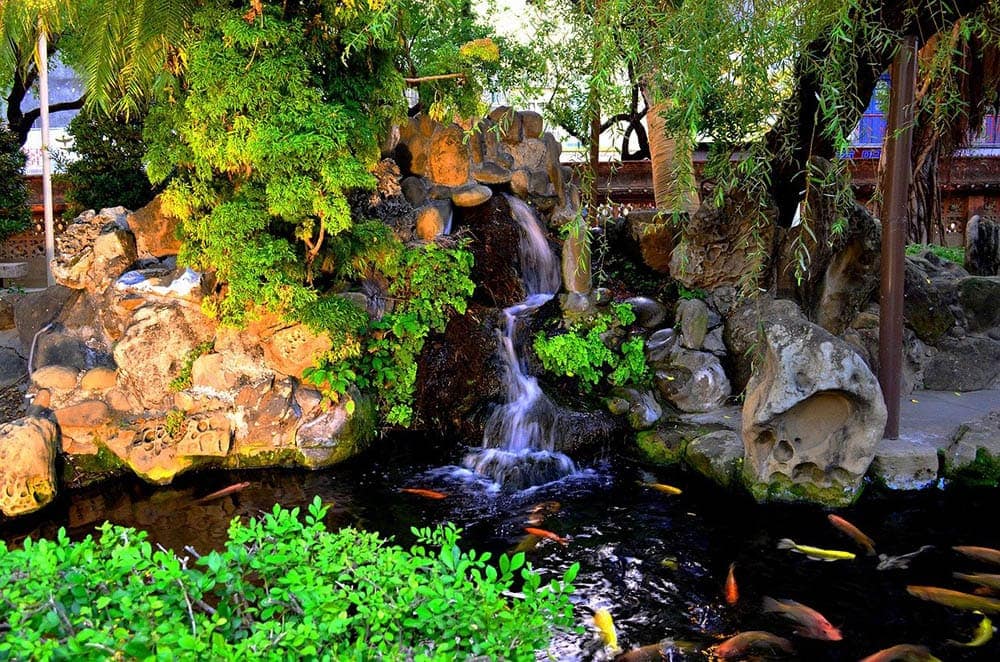

Prevention Is the Best Medicine!
Even though there are plenty of safe and effective methods for removing pond moss, the best thing that you can do is prevent it as much as possible. There are several ways to keep the levels of algae down in your pond.
- Limit sunlight exposure: Algae thrive in warm sunshine. You can stop or slow the spread by limiting the amount of sun that gets to the pond’s surface. If you have an option, build your pond in a shady spot. You can also add stone walls, bushes, or trees around the pond to keep sunlight away.
- Avoid overfeeding: Any excess food that your fish don’t eat sinks to the bottom, where it decays and contributes to the growth of algae. Feed your fish only what they can eat in a few minutes to prevent waste and algae build-up.
- Build a border: A border around your pond serves several purposes. It prevents runoff from your yard from ending up in your pond. Organic material from your yard that ends up in your pond becomes algae food. A border also prevents herbicides and other chemicals from your yard from getting into the pond water and harming your fish.
- Pond dyes: Pond dyes are typically safe for fish and will change the color of your pond water. This prevents sunlight from getting through and promoting algae growth. While they will slow the growth of algae, pond dyes won’t completely kill moss.
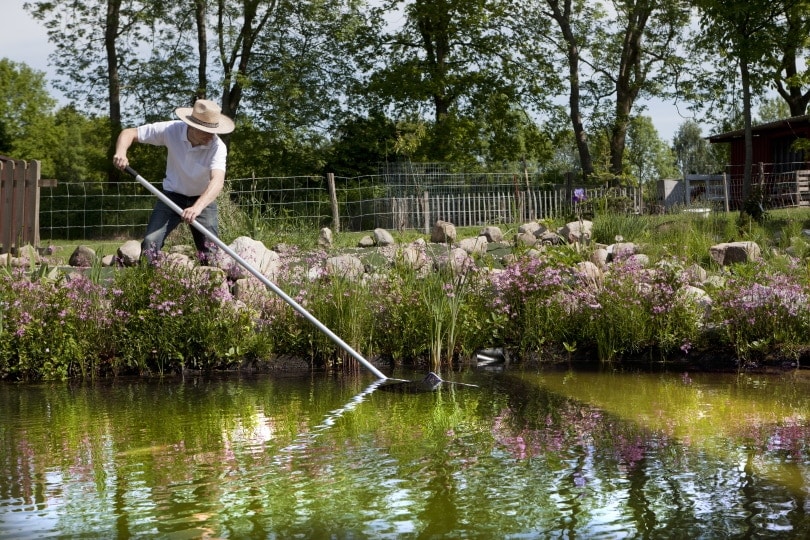

Final Thoughts
There are many environmentally and fish-safe ways to remove moss from your pond. There’s no need to turn to toxic chemicals and algaecides, as there’s a natural remedy for even the most stubborn moss. It just might take a little time and effort to figure out which methods work best for your pond.
Read More:
Featured Image Credit: Paula Cobleigh, Shutterstock
